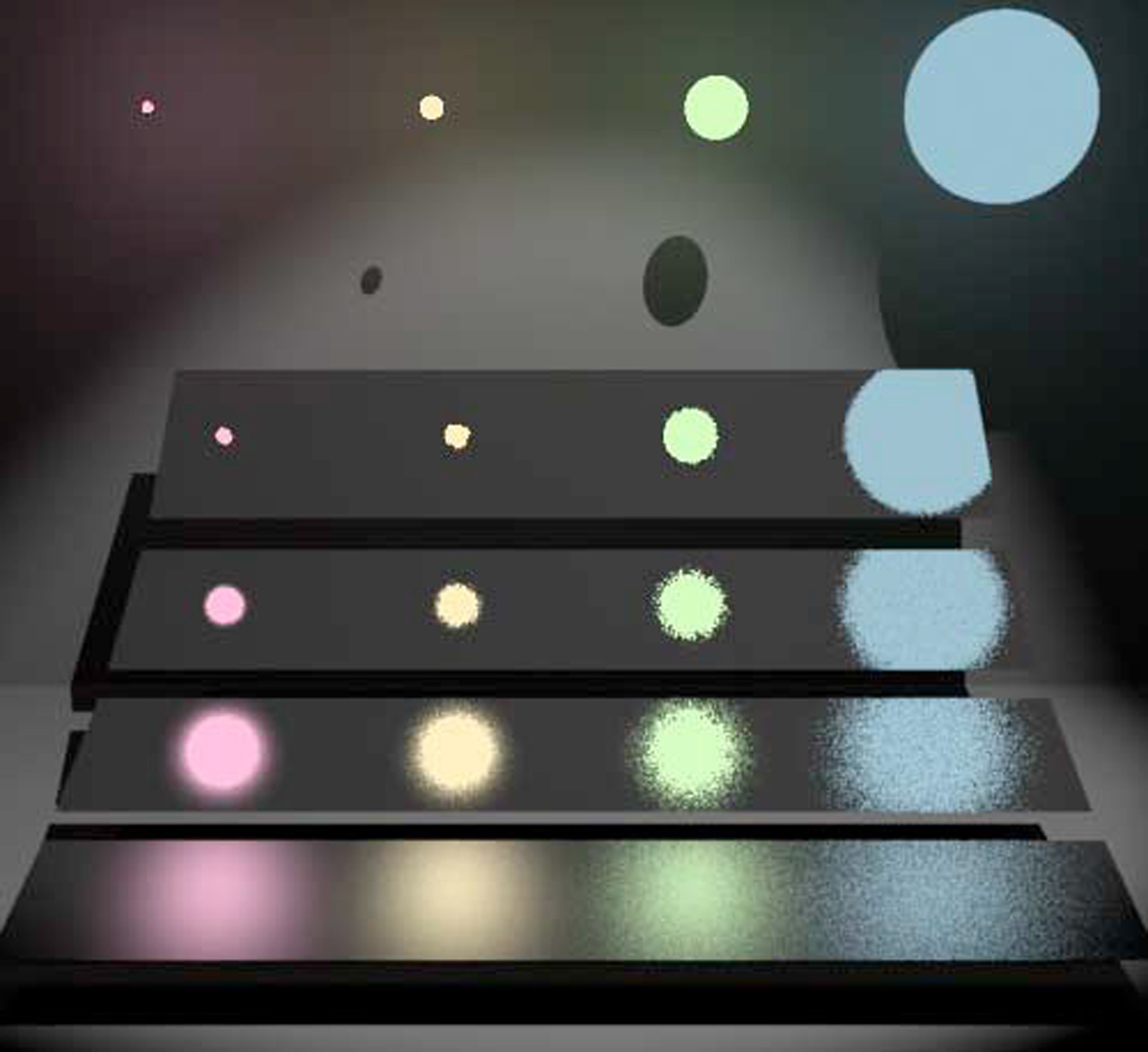“Optimally combining sampling techniques for Monte Carlo rendering” by Veach and Guibas
Conference:
Type(s):
Title:
- Optimally combining sampling techniques for Monte Carlo rendering
Presenter(s)/Author(s):
Abstract:
Monte Carlo integration is a powerful technique for the evaluation of difficult integrals. Applications in rendering include distribution ray tracing, Monte Carlo path tracing, and form-factor computation for radiosity methods. In these cases variance can often be significantly reduced by drawing samples from several distributions, each designed to sample well some difficult aspect of the integrand. Normally this is done by explicitly partitioning the integration domain into regions that are sampled differently. We present a powerful alternative for constructing robust Monte Carlo estimators, by combining samples from several distributions in a way that is provably good. These estimators are unbiased, and can reduce variance significantly at little additional cost. We present experiments and measurements from several areas in rendering: calculation of glossy highlights from area light sources, the “final gather” pass of some radiosity algorithms, and direct solution of the rendering equation using bidirectional path tracing.
References:
1. J. Arvo and D. Kirk. Particle transport and image synthesis. Computer Graphics (SIGGRAPH ’90 Proceedings), 24, 63-66 (1990).
2. S. Chen, H. Rushmeier, G. Miller, and D. Turner. A progressive multipass method for global illumination. Computer Graphics (SIGGRAPH ’91 Proceedings),25, 165-174(1991).
3. M. Cohen and J. Wallace. Radiosity and Realistic Image Synthesis. Academic Press, 1993.
4. R. Cook, T. Porter, and L. Carpenter. Distributed ray tracing. Computer Graphics (SIGGRAPH ’84 Proceedings), 18, 137-146 (1984).
5. J. Kajiya. The rendering equation. Computer Graphics (SIGGRAPH ’86 Proceedings),20, 143-150(1986).
6. M. Kalos and E Whitlock. Monte Carlo Methods, Volume I: Basics. J. Wiley, New York, 1986.
7. D. Kirk and J. Arvo. Unbiased sampling techniques for image synthesis. Computer Graphics (SIGGRAPH ’91), 25, 153-156 (1991).
8. E. Lafortune and Y. Willems. Bi-directional path tracing. Proceedings ofCompuGraphics, Alvor, Portugal, 145-153 (Dec. 1993).
9. E. Lafortune, Y. Willems. A theoretical framework forphysically based rendering. Computer Graphics Forum, 13(2), 97-108 (1994).
10. G. Nelson, editor. Systems Programming with Modula-3. Prentice Hall, 1991. An implementation of Modula-3 is available at http ://www.research.digital.com/SRC/.
11. H. Rushmeier. Realistic Image Synthesis for Scenes with Radiatively Participating Media. Doctoral Thesis, Cornell University, May 1988.
12. E Shirley and C. Wang. Distribution ray tracing: theory and practice. Proceedings of the Third Eurographics Workshop on Rendering, Bristol, England, 33-44 (1992).
13. E Shirley, C. Wang, and K. Zimmerman. Monte Carlo Techniques for Direct Lighting Calculations. ACM Transactions on Graphics, to appear.
14. E. Veach and L. Guibas. Bidirectional estimators for light transport. Proceedings of the Fifth Euro g raphics Workshop on Rendering, Darmstadt, Germany, 147-162 (June 1994).




